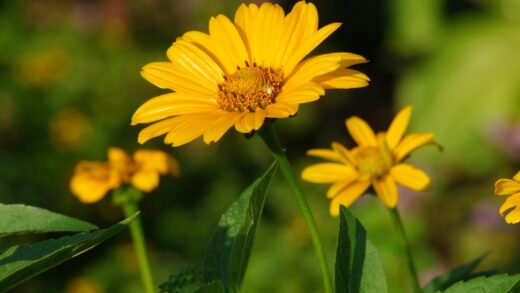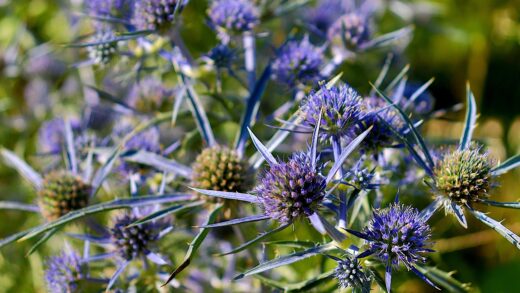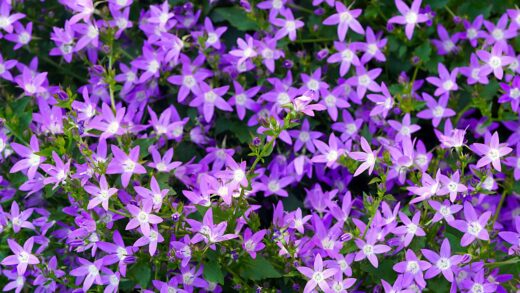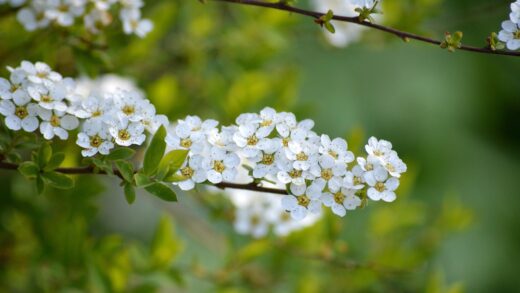Understanding and providing the correct amount of light is a cornerstone of successful bacopa cultivation. Light is the primary source of energy for nearly all plants, driving the critical process of photosynthesis which fuels growth, development, and, most importantly for bacopa, flower production. This charming trailing plant is often marketed with versatile light requirements, but its optimal performance is achieved within a specific range of sun exposure. Getting the light conditions right will result in a plant that is dense, vigorous, and covered in a profusion of its signature star-shaped blooms from spring until the first frost.
Bacopa’s preference is for a location that offers a balance of direct sunlight and some protection from the most intense heat of the day. While it can be grown in conditions ranging from full sun to partial shade, the ideal scenario, particularly in warmer climates, is several hours of morning sun followed by dappled or partial shade in the afternoon. This combination provides the high energy input needed for flowering without subjecting the plant to the stress of excessive heat and rapid moisture loss that can occur in unrelenting, all-day sun.
The amount of light a bacopa receives directly impacts its appearance and flowering habit. Insufficient light will lead to a plant that is “leggy,” meaning it develops long, stretched-out stems with sparse foliage and very few flowers. The plant is essentially reaching for more light, sacrificing its compact, bushy form in the process. Conversely, while bacopa can tolerate full sun, in very hot climates this can lead to scorching of the delicate leaves and flowers, and may cause the plant to temporarily cease blooming during the peak of summer heat as a survival mechanism.
This article will explore in detail the specific light requirements for growing healthy and floriferous bacopa. We will define what constitutes “full sun” and “partial shade” in a garden context, discuss how climate and geographical location influence the ideal sun exposure, and explain how to recognize the signs of both too much and too little light. By mastering the art of positioning your bacopa correctly, you can ensure it receives the perfect amount of light energy to thrive and become a stunning feature in your garden.
Defining full sun and partial shade
When gardening guides refer to “full sun,” they generally mean a location that receives at least six hours of direct, unfiltered sunlight per day. For a plant like bacopa, this level of exposure can be beneficial, especially in cooler, more northern climates where the sun’s intensity is less severe. In these regions, a full sun location can maximize flower production without a high risk of heat stress. The six or more hours of sun do not have to be continuous, but the total accumulation throughout the day should meet this minimum for a location to be considered full sun.
More articles on this topic
“Partial shade,” on the other hand, can be a more ambiguous term, but it typically describes a location that receives between three and six hours of direct sun per day. Crucially for heat-sensitive plants like bacopa, the timing of this sun exposure matters. A site that receives four hours of gentle morning sun and is shaded during the hotter afternoon hours is an ideal form of partial shade. Another type of partial shade is “dappled light,” such as the light filtered through the canopy of a high-branched tree, which provides a shifting pattern of sun and shade throughout the day.
For bacopa, the sweet spot often lies in the territory of “partial sun,” a term often used interchangeably with partial shade. This specifically refers to locations that get that crucial four to six hours of direct sun. When given a choice, providing bacopa with sun during the morning and early afternoon, followed by shade during the hottest part of the day (typically from 2 PM onwards), creates the perfect environment. This schedule allows the plant to photosynthesize efficiently while protecting it from the wilting and stress caused by intense late-day sun.
Understanding these definitions is crucial for selecting the right planting spot. Before planting, it is a worthwhile exercise to observe your garden throughout the day to map out the patterns of sun and shade. Note which areas receive morning sun, which are in full sun at midday, and which get protected from the afternoon heat. This simple observation will allow you to match the needs of your bacopa with the specific microclimates available in your garden, setting the stage for success.
The impact of light on flowering and growth
Light is the single most important factor that stimulates flowering in bacopa. The plant’s internal mechanisms use the duration and intensity of light as cues to initiate and sustain the production of flower buds. When a bacopa receives an adequate amount of light, typically in the range of four to six hours of direct sun daily, it will respond with a prolific display of blooms. The energy captured through photosynthesis is converted into the sugars needed to fuel this impressive floral output.
More articles on this topic
In conditions of insufficient light, such as deep shade or less than three hours of direct sun, the plant’s priority shifts from reproduction (flowering) to survival. It will enter a state of etiolation, characterized by the stretching of its stems as it actively seeks a light source. This results in the classic “leggy” appearance: long, weak stems with large gaps between the leaves. Flowering will be minimal or completely absent, as the plant conserves all its limited energy for vegetative growth towards the light. The foliage may also be a paler shade of green due to lower chlorophyll production.
The overall habit and form of the plant are also directly shaped by light exposure. In ideal light conditions, bacopa grows into a dense, well-branched plant with a lush, full appearance. The nodes on the stems (the points where leaves emerge) remain close together, creating a compact mat of foliage from which the flowers emerge. This dense growth is what makes bacopa so effective as a “spiller” in container arrangements, creating a thick cascade of colour over the edge of the pot.
Furthermore, light intensity can even influence the vibrancy of the flower colour. While this effect is more pronounced in other plant species, adequate sunlight helps to ensure that the pigments in the bacopa’s flowers—whether white, pink, lavender, or blue—are rich and fully expressed. A plant grown in optimal light will not only have more flowers but the flowers themselves will appear more vivid and striking. Therefore, providing the right light is not just about survival, but about achieving the highest aesthetic quality.
Adapting to different climates and conditions
The ideal amount of sun exposure for bacopa is not a universal constant; it is highly dependent on the geographical location and climate. In cooler, northern latitudes (such as the UK, the Pacific Northwest, or New England), the summer sun is less intense. In these regions, bacopa can, and often should, be grown in full sun (six or more hours) to achieve the best possible flowering performance. The risk of scorching or heat stress is much lower, and the plant will benefit from the maximum available light energy.
Conversely, in hot, southern climates (such as the southern United States, Australia, or Mediterranean regions), the sun’s rays are far more intense and temperatures are higher. In these areas, planting bacopa in full, all-day sun can be detrimental. The plant is likely to suffer from heat stress, constant wilting, and scorched foliage. It may even enter a state of dormancy during the hottest part of the summer, ceasing to flower until the temperatures cool in the autumn. For these hot climates, a location with morning sun and afternoon shade is not just beneficial, it is essential for the plant’s survival and success.
Microclimates within your own garden can also play a significant role. A spot next to a south-facing brick wall will be much hotter and reflect more intense light than a spot in the middle of an open lawn. The former would likely be too harsh for bacopa in a hot climate, while the latter might be perfect. Similarly, a garden in a coastal area with frequent breezes and morning fog will have a different light quality than a garden further inland with dry, clear air. Being observant of these subtle differences allows for more precise placement.
It is also important to consider the changing angle of the sun throughout the seasons. A spot that is in full sun during the peak of summer in June may be in partial shade by September as the sun tracks lower in thesky. This is generally not a major issue for an annual planting, but it is something to be aware of. The key takeaway is to assess your specific climate and conditions and adjust the “rules” accordingly. The goal is always to provide ample light without causing undue stress from excessive heat.
Recognizing signs of incorrect light exposure
The bacopa plant provides clear visual feedback when it is not receiving the correct amount of light. Learning to read these signs allows you to diagnose problems and relocate the plant if necessary. The most obvious symptom of too little light is legginess. If you observe the stems becoming elongated with large spaces of bare stem between the leaves, it is a definitive sign that the plant is stretching in search of more sun. This will be accompanied by a significant reduction, or complete absence, of flowers.
Another sign of insufficient light is the colour of the foliage. While healthy bacopa leaves are a vibrant green, a plant struggling in too much shade will often have leaves that are a paler, washed-out green. The overall size of the leaves may also be larger than normal as the plant tries to maximize its surface area to capture what little light is available. The entire plant will lack the dense, vigorous appearance of a healthy specimen and will look sparse and weak.
On the other end of the spectrum, a bacopa receiving too much intense sunlight will also show distinct signs of stress. The most immediate symptom is frequent wilting, especially during the afternoon, even when the soil is moist. The edges of the leaves may appear brown, crispy, or “scorched.” The flowers, being delicate, can also look burnt or may fade in colour very quickly. The plant’s foliage might take on a yellowish or bronze cast as the chlorophyll begins to break down from excessive light and heat stress.
In response to prolonged heat and sun stress, the plant may also stop flowering altogether. This is a survival mechanism where the plant conserves energy and water by shutting down its reproductive processes. If you notice a healthy, well-fed plant in full sun ceasing to bloom in the middle of summer, it is very likely a response to heat stress. Observing these signals and moving the container to a location with some afternoon shade can often rejuvenate the plant, prompting it to resume flowering once it has recovered.
📷: Deavmi, CC BY-SA 3.0, via Wikimedia Commons


















